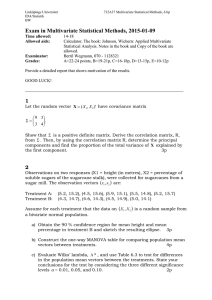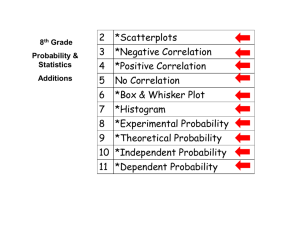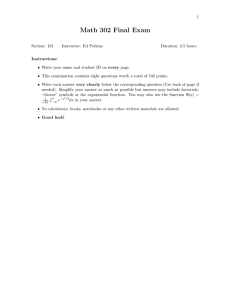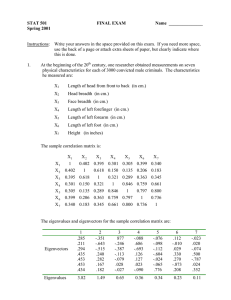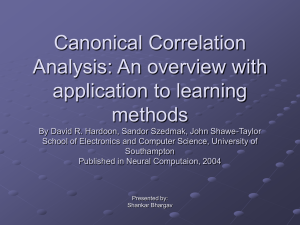Tutorial 3 - comp
advertisement
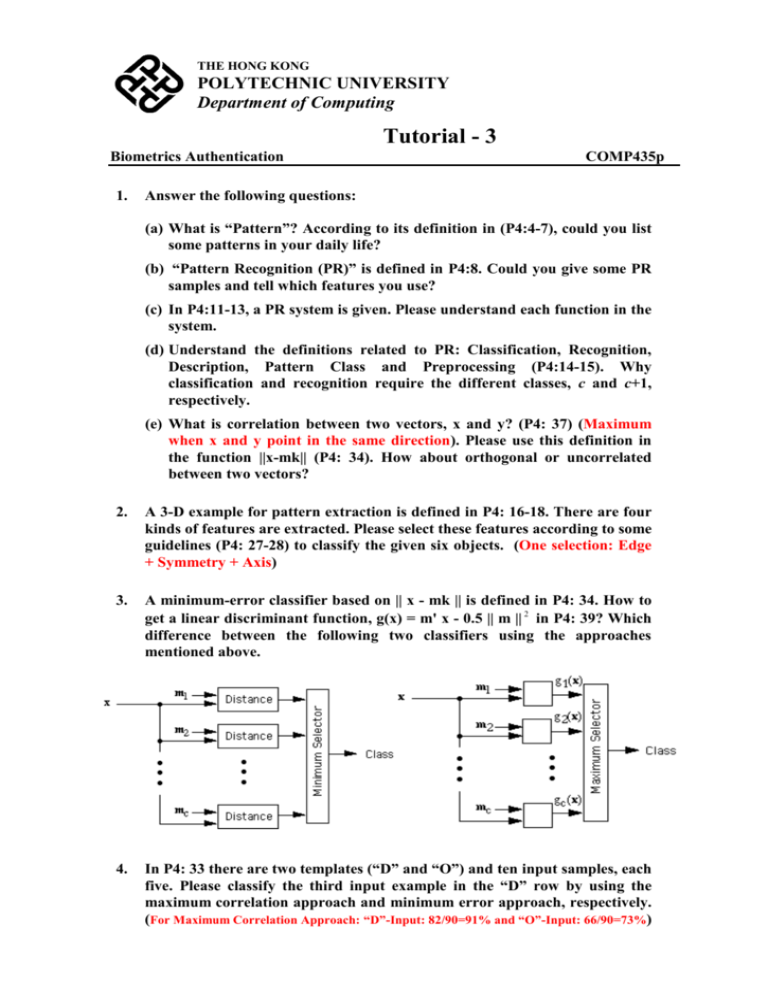
THE HONG KONG POLYTECHNIC UNIVERSITY Department of Computing Tutorial - 3 Biometrics Authentication 1. COMP435p Answer the following questions: (a) What is “Pattern”? According to its definition in (P4:4-7), could you list some patterns in your daily life? (b) “Pattern Recognition (PR)” is defined in P4:8. Could you give some PR samples and tell which features you use? (c) In P4:11-13, a PR system is given. Please understand each function in the system. (d) Understand the definitions related to PR: Classification, Recognition, Description, Pattern Class and Preprocessing (P4:14-15). Why classification and recognition require the different classes, c and c+1, respectively. (e) What is correlation between two vectors, x and y? (P4: 37) (Maximum when x and y point in the same direction). Please use this definition in the function ||x-mk|| (P4: 34). How about orthogonal or uncorrelated between two vectors? 2. A 3-D example for pattern extraction is defined in P4: 16-18. There are four kinds of features are extracted. Please select these features according to some guidelines (P4: 27-28) to classify the given six objects. (One selection: Edge + Symmetry + Axis) 3. A minimum-error classifier based on || x - mk || is defined in P4: 34. How to get a linear discriminant function, g(x) = m' x - 0.5 || m || 2 in P4: 39? Which difference between the following two classifiers using the approaches mentioned above. 4. In P4: 33 there are two templates (“D” and “O”) and ten input samples, each five. Please classify the third input example in the “D” row by using the maximum correlation approach and minimum error approach, respectively. (For Maximum Correlation Approach: “D”-Input: 82/90=91% and “O”-Input: 66/90=73%)


